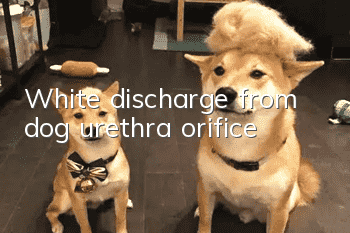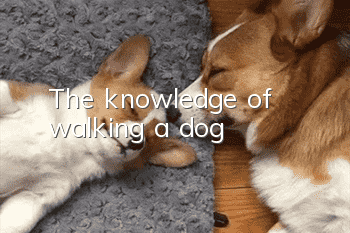How to train a Welsh Terrier How to train a Welsh Terrier

How to train Welsh Terriers? Many families now raise them as companion dogs. In order to adapt them to life with humans, they need to be trained from an early age.
Method 1: Get to know dogs
Many parents often complain that their dogs are disobedient, or that the dogs have brought some bad habits after entering the house. Although some of the dog’s behavioral habits are indeed related to genetic factors, the acquired influence of the owner will also affect Dogs bring changes. Therefore, when a problem with poor dog behavior occurs, the first thing parents should do is not complain, but find out the root cause of the problem. If the dog comes to your family soon after birth, it is extremely important to socialize the dog well. Generally speaking, the period when a dog is under 4 months old is the best period for socialization. If the training goes wrong during this period, the situations mentioned at the beginning of the article may occur. But in the process of raising puppies, what can parents do to avoid making mistakes?
Dog socialization is not simply about letting dogs come into contact with other dogs. The process of contact with people and other animals is also a part of dog socialization. In addition, dog socialization should also include letting dogs The process of dogs adapting to their own living environment, becoming familiar with the things around them, and not being afraid of certain stimuli (such as the sound of car horns on the street, the sound of firecrackers, etc.).
When a dog does not leave its mother dog, it can learn the ability to communicate with its own kind by playing with its mother dog and siblings. For example, when a dog gets along with its companions, it will know how hard it will not hurt the companions when playing and biting them. However, if the dog leaves its mother and companions before it has learned this skill, , then they may bite other dogs when fighting with other dogs in the future. For dogs that leave their bitches prematurely, owners can actually train them. For example, when they open their mouths to bite you, you can tell them sternly that they can’t when they use force. Usually, dogs will be able to do so in a relatively short period of time. Can understand the master's meaning.
Method 2: Patient guidance
Parents must first adjust their mentality when training their dogs. Puppies are just like children. Proper guidance can make your training more effective. Take training dogs to defecate at designated spots, which most parents do. When you go home and see your dog’s urine stains or poop in the middle of the living room, it’s too late to pull them over and teach them a lesson. I don’t know the reason for your anger, so I can only guess on my own. Some dogs will think that you are just grumpy after get off work, and eventually they will not dare to approach you quickly when you come home from work; while some dogs think that they cannot poop in the middle of the living room, so it is better to change it next time. Go to a more secluded place. Faced with this situation, parents can first observe where their dogs defecate most often, and thenThen lay out pee pads in those areas, and remember to praise your dog when you see them defecating on the pee pads. After they know that they have to defecate on the pee pad, you can put the pee pad in a fixed place, take them to the pee pad before the dog habitually defecates, and let them smell the smell of the pee pad. Under the guidance of the doctor, you will know that you need to defecate at the designated spot. In the same way, guidance methods can also be used when training dogs not to scratch the sofa or jump on people. As long as the guidance method is correct, the dogs will not only be able to meet the owner's requirements quickly, but the possibility of "relapse" will also be greatly reduced.
Method 3: Appropriate forcing
Sometimes the parents’ patient guidance may not make the dog obey the instructions immediately. At this time, the parents need to do a little forced training. For example, in the process of training dogs not to pounce on people, parents usually guide them like this: putting the dog's legs down over and over again, and retreating immediately when they see the dog about to pounce, etc. However, some dogs just can't. Attack people relentlessly. When you encounter such a dog, when they jump on you again, you can push them away directly and tell them in a commanding tone that this is not okay. If the dog still continues to jump on you, parents can gently Give them a tap on the nose. In the process of forced training, the owner must not "slap him and give him a piece of candy", otherwise your forced training will not have any effect.
Method 4: Rewards with toys and snacks
Dog training must be inseparable from the stimulation of rewards, which can include toys, snacks, and petting. When giving rewards and stimulation to dogs, owners need to do the following: 1. The rewards given should also be different depending on the difficulty of training. For example, for low-difficulty training, you only need to give them some petting stimulation. If the dog completes more difficult training, you can give them some snacks that are usually not available as stimulation. 2. Rewards cannot be given frequently. No matter what kind of reward it is, if it is given continuously every day, the dog will eventually feel that these rewards are just things that it should get normally, so it will be more difficult to carry out new training. The owner can only prepare better snacks or Toys can help dogs complete new training.
- What to do if your dog has double rows of teeth
- Things to note when feeding Teddy dogs
- Signs your dog loves you
- Common dog diseases in winter
- What are the symptoms of rabies in dogs?
- What are the symptoms of false pregnancy in dogs?
- Letting your dog walk upright is very harmful. Don’t let your ignorant interest ruin your dog’s life!
- What should I do if my dog has fleas? How to get rid of fleas on your dog?
- Why should a dog’s tail be docked? What are the reasons for docking a dog’s tail?
- What causes tear stains in dogs and how to improve them



